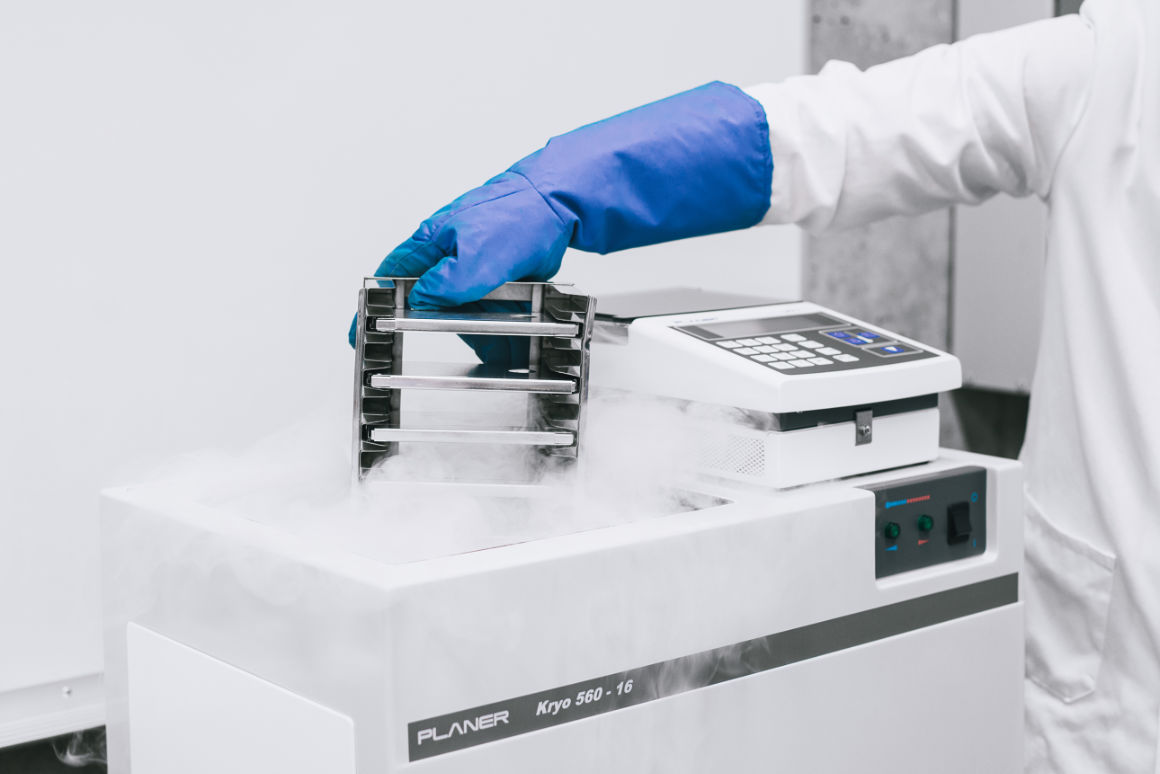
At Planer, we are frequently asked the question “How do we optimise our freezing profile for our controlled rate freezer to get the best results?”. We thought that a summary of a recent presentation by Allison Hubel, might provide some useful guidance. Allison, an expert in Cryobiology from the University of Minnesota, USA, gave an informative talk to the Stem Cell users Group and the Society of Low Temperature Biology meeting in Seville where she explained the key factors to consider when trying to optimise a freezing profile. Here is an outline of her presentation on "Optimising Freezing Profiles"
Cryopreservation of a cell therapy
Cells therapies are becoming a standard of care for the treatment of disease and injury. Unlike other standard therapies (i.e. drugs and medical devices), cell therapies have a complex supply chain that requires viable, functional cells all along it. It is noteworthy that what happens along the supply and processing chain determines the quality of the product at the end. Cryopreservation of a cell therapy is a common method of stabilisation along this complex supply chain.
Cryopreservation typically requires 6 steps:
(1) Pre-freeze processing
(2) Formulation and introduction of a cryopreservation solution
(3) Freezing
(4) Storage
(5) Thawing
(6) Post thaw characterisation.
Optimizing the freezing process
It has been known for almost 50 years that the rate of cooling has a strong influence on the post thaw recovery of cells. Controlled rate freezing is often used to control the temperature as a function of time for cells being cooled; therefore improving both the recovery and consistency of outcome.
A controlled cooling rate protocol has 5 steps:
(1) Initial equilibration
(2) Cooling
(3) Seeding of the sample
(4) Secondary cooling
(5) Cooling to the final temperature.
The initial equilibration stage of the freezing protocol enables samples placed in the controlled rate freezer to equilibrate with the freezer. Optimising this step, in particular, helps to improve reproducibility of the freezing process. The cooling rate for the sample is the cooling rate used for both primary and secondary cooling of the sample. One degree C/min is a cooling rate commonly used for several cell types.
Controlling the temperature at which ice forms in the extracellular solution
The temperature at which ice forms in the extracellular solution also plays an important role in the post thaw survival of cells. There are several methods of controlling the temperature at which ice forms in the extracellular solution: manual and automatic seeding. Manual seeding requires the use of liquid nitrogen or a chilled instrument to induce nucleation and this approach is commonly used with cell types that require precise control of the nucleation temperature. Automatic seeding uses a dip in the sample temperature to induce nucleation. Ultimately, the sample is cooled to a final temperature at which time it is transferred to a low temperature storage unit.
Debugging your freezing protocol
It is important to note that debugging your freezing protocol is straightforward; you can at any time stop the process, thaw the sample and determine viability. This approach allows us to determine if a particular segment of the controlled rate freezing protocol results in cell losses and a basis from which to change and optimise the protocol. Developing strategies for optimising and debugging freezing protocols will be critical in the development and implementation of high efficiency cryopreservation protocols.
Allison's presentation at the 2019 SLTB meeting was extremely well received and generated some thought-provoking discussions during the meeting. For more information, her book "Preservation of cells. A practical manual" provides an extremely useful guide to explore the subject in greater detail.
For further information
More about Allison Hubel
"Preservation of cells. A practical manual" by Allison Hubel
BioCoR, University of Minnesota, and the science, technology and practice of bio preservation
Society of Low Temperature Biology
